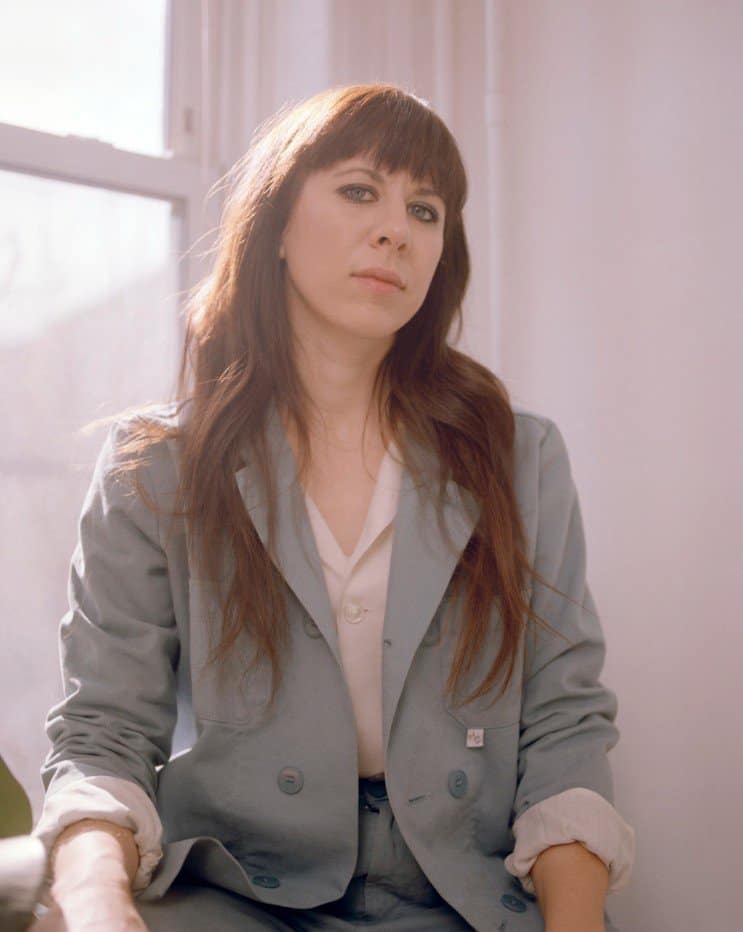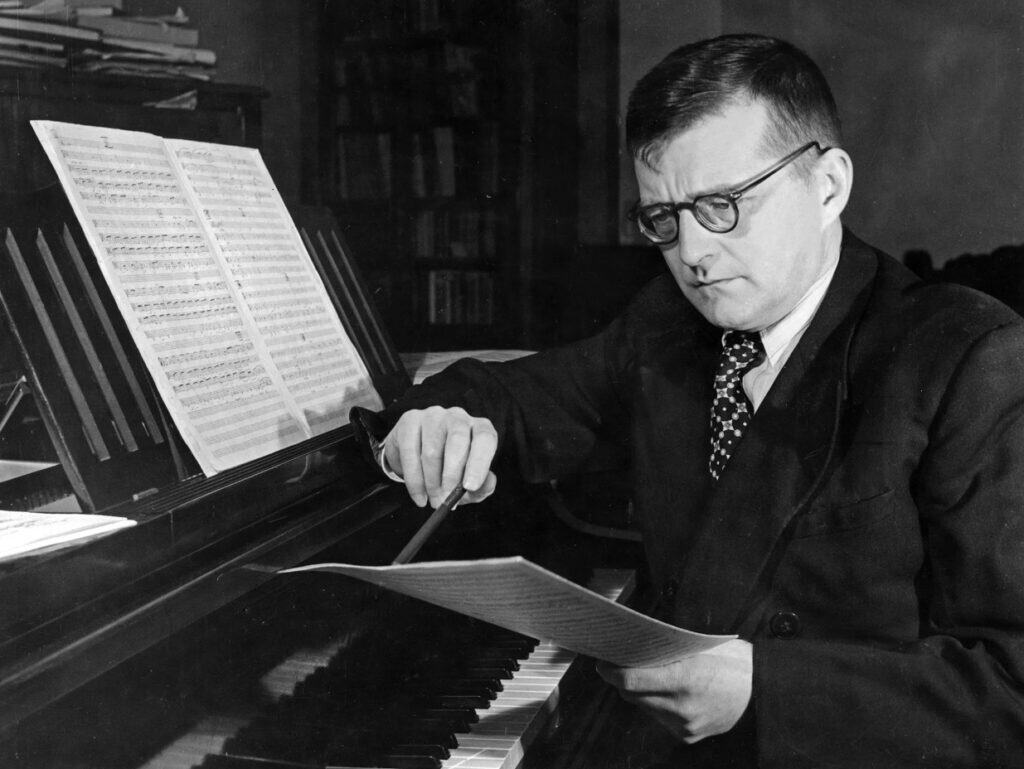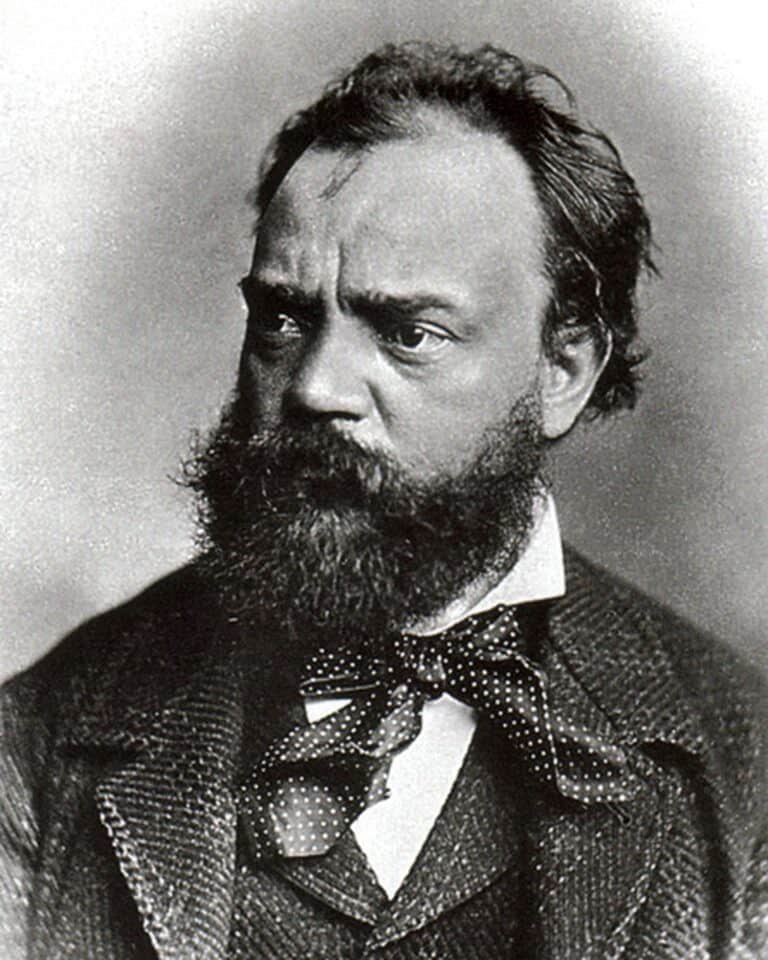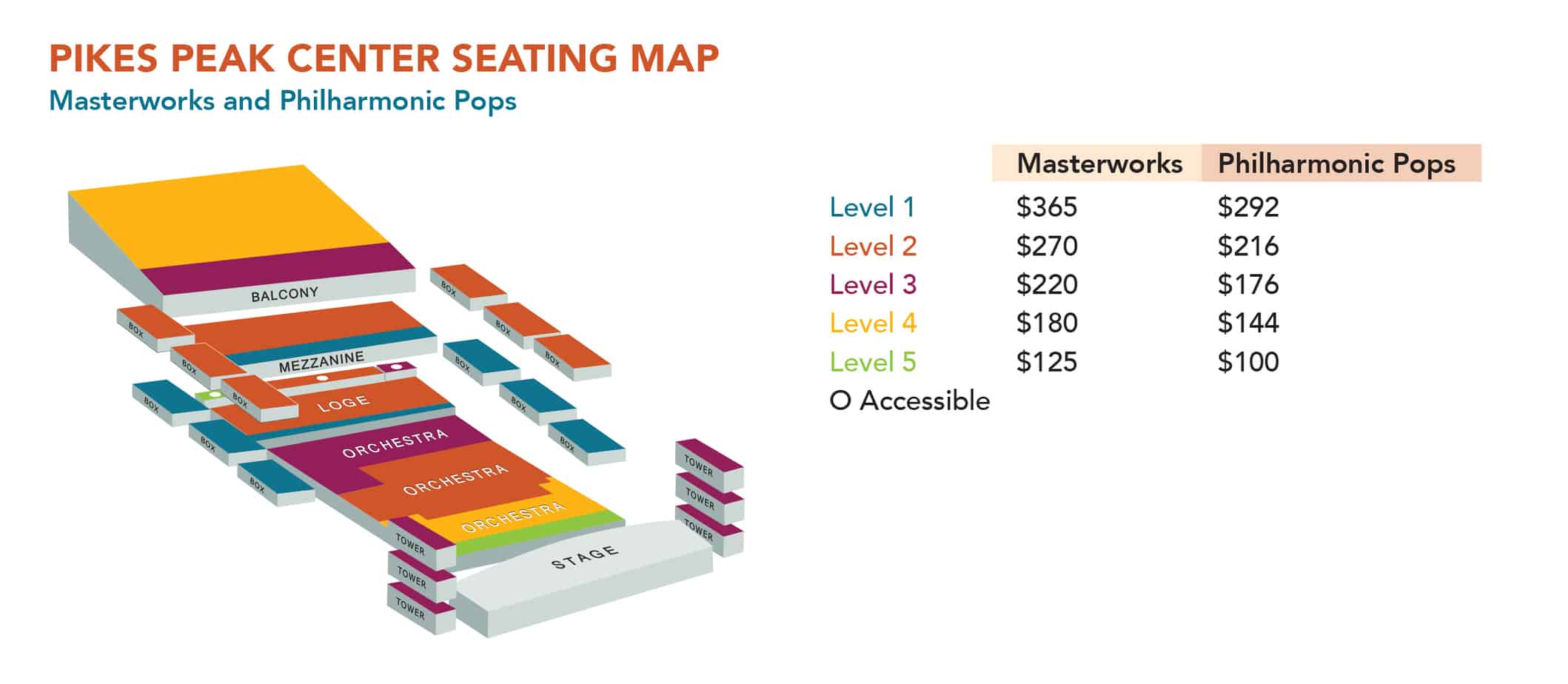Missy Mazzoli (1980 - )
Sinfonia (for Orbiting Spheres)
10 minutes
Composer: Missy Mazzoli (Born in Lansdale, Pennsylvania on October 27, 1980)
Work composed: 2014, as a commission from the Los Angeles Philharmonic
World premiere: Sinfonia was premiered on April 14, 2014, by the Los Angeles Philharmonic, and conducted by composer John Adams.
Instrumentation: 2 flutes, 2 oboes, 2 clarinets, 2 bassoons*, 2 horns*, 2 trumpets*, 2 trombones* (*each of these instrumentalists also play differently pitched harmonicas), tuba, percussion (vibraphone, marimba, suspended cymbal, small gong (Mazzoli calls this an “Opera” gong), Lion’s roar, glockenspiel, melodica, snare drum, spring coil, boom box (sound-file), piano (also plays a synthesizer with an organ sound), strings

Percussion notes:
Lion’s roar is a drum-like instrument, with typically a calf-skin head on one side of its barrel, and with a thick gut string protruding from that drumhead. The percussionist plays it by sliding their fingers along the gut string, away from the drum, and allowing a friction to vibrate the string, which then carries back into the drum and resonates, creating a magical sound – which somewhat resembles the “roar of a lion.”
A melodica is a small keyboard instrument that’s played by blowing into one end – like a piano-keyboard shaped recorder. Blowing into the melodica’s mouthpiece activates a set of reeds that are played by depressing the keys on its keyboard.
A spring coil is a mechanical part to a machine, which looks like a big slinky – thick and typically used for the suspension of a car or truck. Typically made of steel, and extracted for orchestral use, when it’s struck by a mallet or piece of metal by a percussionist, the Spring coil makes a unique “clanging” sound.
A boom box is a portable CD/cassette tape/USB file player. Mazzoli’s instructions for this piece of audio equipment is to play a pre-recorded atmospheric sound file that Mazzoli has already created. The Boom box should be linked to speakers in the back of the stage, which in playback should be loud enough to reach the entire audience.
Dmitri Shostakovich (1906 - 1975)
Concerto No. 1 for Cello and Orchestra in E-flat Major, Op. 107
28 minutes
Composer: Dmitri Shostakovich (Born in St. Petersburg, Russia in 1906; Died in Moscow, U.S.S.R. in 1975)
Work composed: Shostakovich wrote this work in 1959 specifically for his former student and lifelong friend, the great cello virtuoso Mstislav Rostropovich.
World premiere: Rostropovich premiered the Concerto on October 4, 1959, at the Large Hall of the Leningrad Conservatory with the Leningrad Philharmonic Orchestra led by Shostakovich’s favorite conductor, Yevgeny Mravinsky.
Instrumentation: solo cello, piccolo, 2 flutes, 2 oboes, 2 clarinets, 2 bassoons, contrabassoon, horn, timpani, celesta, strings
Concerto No. 1 for Cello and Orchestra in E-flat Major, Op. 107
I. Allegretto
II. Moderato
III. Cadenza
IV. Allegro con moto

During the mid-twentieth century, the Soviet Union was very proud of its great musical hero, Dmitri Shostakovich, who was the first musical superstar entirely trained in the Soviet education system. Despite this civic pride, it is well known that Shostakovich endured brutal treatment when Stalin, who lacked the sophistication to appreciate Shostakovich’s more modern music, came to power. Although Stalin’s venom did not make Shostakovich any less a musical genius, the composer clearly began to express more darkness, more sarcasm, and more pathos, in his music. And in this Concerto, along with its beauty and virtuosity, this sense of anger and psychosis never seems far away.
When Shostakovich began his First Cello Concerto in 1959, Stalin had died six years before and the Soviet regime was changing in a more positive way towards artists, but the scars were clearly still etched into the composer’s psyche. The Concerto was written for the great cello virtuoso, Mstislav Rostropovich (1927 – 2007), who was Shostakovich’s former student when he taught at the Moscow Conservatory. The two musicians became life-long friends, too, and Shostakovich knew that he could give to Rostropovich a work of gritty emotional complexity, and dazzlingly virtuosic passages. Reportedly, Rostropovich memorized the Concerto in four days, and the premiere took place in 1959 with Rostropovich performing the solo part. It immediately became well loved and has remained famous as one of the most challenging cello concertos in the repertoire.
The soloist’s first notes that open the beginning movement, Allegretto (easy paced), are a motive that was extremely meaningful to Shostakovich – they are four notes that, essentially, represent a cryptogram of Shostakovich’s name – D-S-C-H (which, spelled in German, mean the pitches D, Eb, C, and B natural). The pitches are a little out of order, but Shostakovich used this type of cryptogram increasingly in his works, and this four-note motive permeates almost the entire work. The winds answer the cello with pert, staccato (short in length) little rhythms, and at first, the music rather feels jaunty and carefree. But the tone changes quickly. In less than a minute, the soloist plays with increasing fervor and the scoring for the staccato winds becomes thicker and darker. At about a minute-and-a-half into the movement, the timpanist belts out an accented note which sets into motion a menacing march of steely automatons. It’s one of Shostakovich’s more memorable themes. Throughout the rest of the movement, Shostakovich mixes the cryptogram motive with other themes, continually creating new orchestral sounds, such as when the very low contra-bassoon begins to creep up the scale from its lowest depths while the menacing march splinters apart in the other instruments. Most notable, though, is Shostakovich’s use of just one horn in his orchestral forces, who serves as almost a second soloist in this Concerto. The frantic momentum eventually begins to wind down, except for the last few bars, when the timpanist returns to slam the door shut on this first movement.
The second movement, Moderato, at last breaks from all that angry energy into truly lovely music-making. The strings play a soft, night- music chorale in which the horn plays a brief and beautiful solo before the cello soloist enters. The music meanders slowly for a gentle moment, lost in thought, perhaps visiting ghosts with its sad tenor. A breath-catching instance arrives at about five-and-half minutes, when the cello and the winds play a sweet, catchy little tune, the cello singing, the little wind band sounding on the off-beats. It’s unexpected and sweetly pleasing. Soon, the music moves into several moments of shattering volume and a bone-chilling combination of instruments – such as when muted strings meander through deathly quiet murmurs, and the solo cellist plays into its highest reaches by using harmonics. To this is added a celesta, which is a small keyboard instrument that sounds much like a toy piano. Lastly, the hollow sound of the clarinet joins in, and this chamber-like group of instruments settles into a long discussion, all of it beautiful in a surreal and spectral way, until the end of the movement.
From here until the end of the Concerto, there are no breaks between movements, and the cellist moves directly into an extended solo Cadenza. The music begins morphing away from the spooky night music of the previous movement, and gradually begins revving up in energy, speed, and volume.
Without a pause, the final movement, Allegro con moto (fast with motion and drive), arises out of the pyrotechnics of the Cadenza, with a bracing and forward-thrusting theme heard first in the clarinet and oboe. Along the way, the timpani interrupt with random-sounding outbursts, and though everything feels on the edge of chaos, there’s a certain comedy to all this commotion. As everything spins along, Shostakovich introduces several short little motives – beginning with the solo horn, then moving to a squeaky clarinet, where these motives are played obsessively, like someone’s going a little mad – meanwhile, the solo cellist plays a million manic notes per second. And above the soloist’s increasingly jaw-dropping virtuosity, the original opening D-S-C-H motive returns and brings the Concerto to its hyper-energized final bars.
Antonin Dvořák (1841 - 1904)
Symphony No. 6 in D Major, Op. 60, B. 112
40 minutes
Composer: Antonin Dvořák (Born in Nelahozeves (near Prague), Bohemia (now Czech Republic) in 1841; Died in Prague in 1904)
Work composed: 1880
World premiere: Symphony No. 6 was commissioned by the Austrian conductor Hans Richter, of the Vienna Philharmonic, and had initially been slated to premiere with Richter and the Vienna Philharmonic late in 1880, however, political ill will from the orchestra regarding performing Czech works held the Symphony’s premiere back repeatedly. Dvořák thus arranged for the world premiere to take place later in Prague, and it was performed by the Czech Philharmonic Orchestra with Adolf Čech conducting on March 25, 1881.
Instrumentation: 2 flutes (+ piccolo), 2 oboes, 2 clarinets, 2 bassoons, 4 horns, 2 trumpets, 3 trombones, tuba, timpani, strings
Symphony No. 6 in D Major, Op. 60, B. 112
I. Allegro non tanto
II. Andante
III. Scherzo (Furiant) – Presto
IV. Finale – Allegro con spirito

Dvořák’s ebullient Symphony No. 6 is considered the turning-point in his storied career when he leapt into fame and musical maturity – but its premiere didn’t come easily. In 1880, conductor Hans Richter of the Vienna Philharmonic had, along with Brahms, begun to take special notice in Dvořák. Richter commissioned the young Czech composer to write a symphony for the Philharmonic, which Dvořák fulfilled within two months with his Symphony No. 6. The Vienna Philharmonic premiere for this Symphony was to happen in December of 1880, but Richter had to make excuses and postponed it repeatedly, because as it turned out, the mostly Austrian members of the Orchestra weren’t keen on playing too much “Czech music” and refused to play it. At the time, Czechs and Slovaks were petitioning for autonomy from the Austro-Hungarian Empire, and just beginning to ally themselves, but most Austrians were unsympathetic. As Richter tried to mediate the situation with excuses, Dvořák eventually realized he himself had to make something happen or his Symphony might never see the light of day. And so, through the good graces of his Czech friends, Dvořák premiered it instead before his countrymen in 1881 in Prague.
The Czech critics in Prague – who had previously chided Dvořák for writing too much in the Germanic tradition – here had to admit that his new Sixth Symphony was outstanding. Ironically, were it not for the dogged support of the Austrian conductor Richter, after this initial premiere, it may have taken decades for this Symphony to become noticed elsewhere. It took another year before Richter could premiere it in 1882 with the London Symphony in England, and finally there, it was so well received that Dvořák’s world fame began to truly skyrocket. And justly so, as the Sixth is filled with some of Dvořák’s most gorgeous melodies and is as radiantly pleasant as any symphony in the repertoire.
Immediately, what stands out about the first movement, Allegro non tanto (not too fast), is the delightful lightness of the themes – elementally airy, fresh, and uncomplicated. The first theme is shared initially by the upper woodwinds playing a simple, short melody, echoed by the bassoons and string basses. As the theme grows in length, so do the instruments added to the orchestral fabric, and soon the energy grows into a sun-bedazzled grandeur. The first movement progresses, lyrical and resplendent with an indefatigable confidence, but Dvořák could never resist the shadows cast on a sunny summer’s day, either. A particularly beguiling example occurs at about four minutes into the movement, when Dvořák morphs the first main theme into mystery with dark and intriguing transformations. Throughout the movement, too, notice the interplay between three-beats-per measure and two-beats per measure (called a hemiola) –besides this being a characteristic of Bohemian folk music, Dvořák uses this technique of contrasting metric feels to create a delightful tension. The movement ends with a wistful moment of tenderness, followed by a proclamatory and cheery salutation.
The second movement, Andante, is a serene and beautiful song, showing Dvořák’s exceptional lyrical prowess. The slowly developing first minutes of the movement open gently, like sunflowers to the sun. A wonderfully original moment occurs about nine minutes into the movement, after a brief cadenza-like solo in the flute, when the timpani tap out a delicate rhythm suggesting a sweet, inner reverie, while the winds, then strings, alternatingly swell with brief snippets of lyricism. The movement ends simply and sweetly.
The third movement Scherzo (written as a Furiant – a Czech folk dance in a triple meter, but which often clashes with a feel of a duple meter) clearly harkens to a Czech-folk dance, but in Dvořák’s hands it’s not only a Nationalistic dance but a series of lightning bolts. That energy is balanced in the middle with a gracefully contrasting Trio section containing ingeniously delicious moments featuring the piccolo at about three-and-a-half minutes into the movement. Its final section, a return to the furiant, is as exciting as it gets, and at its premiere the Czech audience demanded that this movement be encored.
The Finale, Allegro con spirito (fast and spirited) is filled with charge and cheer, based again on uncomplicated themes, which gives it the lightness to soar. The beginning measures feature several groups of instruments blending in together as though they are building up forces – first with quiet strings, then joined by the bassoons, then the upper woodwinds, until the entire orchestra is flowing at full strength like a mighty river. Dvořák, of course, imbues this movement’s lengthy central section with dramatic energy and his hallmark rich harmonies. As the conclusion approaches, starting at about ten minutes into this finale, its themes are trans-morphed into fugal whirlwinds, hymns, and festival-like fanfares, as they gravitate towards this great Symphony’s glorious and exhilarating closing bars.
© Max Derrickson

